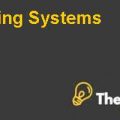
Western Asset Arbitrage Case Solution
Problem Diagnosis
The nature of the collateralized debt obligations has been discussed within this case. Furthermore, this case also emphasized on the risk considerations, which have a significant impact on the structuring of the CDOs and also the role played by the CDOs in the securitization process. A CDO issuance has been prepared in this case for Western Asset by one of the associates of Debt capital market of the Lehman Brothers. Moreover, a number of banks have also contacted Western Asset to purchase the high yield corporate bonds and senior secured bank loans, which are being sold by them in order to free up their capital and lowering their requirements of capital maintenance. A recommendation needs to be made regarding the CDO proposal and whether the terms were too conservative or not.
Analysis
Question 1
What is a CDO? Explain how it works.
A CDO or in full form called as the Collateralized Debt Obligations is basically a corporate entity or in other words also called as a special purpose vehicle, which is set up in order to hold the assets of the company as collateral and against those assets the company sells different packages of cash flows to the outside investors.In simple terms the CDO issuance begins with the setting of an independent corporation, which sells the investors all sorts of the cash flows generating packages such as the senior debt, junior debt and the unrated equity.
Moreover, with the generated funds, the company invests in high yield bonds, mortgage backed securities, and asset backed securities, loans and even other forms of CDOs. The working of a CDO could be clearly seen in the exhibit 3 of the case. This process is basically initiated by an investment bank, which is basically the issuer of a CDO. The investment bank sets up the special purpose vehicle for Shell Corporation.
The main purpose of Shell Corporation is to buy, hold and sell the securities to and from the investors in the market. The participation of the special purpose vehicle company is then sold to the investors from the cash flow generated by the SPV’s pool of securities. Once the complete pool of the underlying assets in which the SPV invests is established then the risk is layered by forming different tranches of different securities according to their relative risk profile.
This is done in a similar way by dividing the underlying assets into senior debt, subordinated debt and equity layers or in terms of CDOs these three tranches are senior tranches, mezzanine tranches and equity tranches which remain unrated. The pay out to all the investors in these three different tranches is then decided by the relative risk profile of each of the tranche for instance the senior tranche would have the highest level of the risk. This is the complete process in which a CDO works. The value of the CDO is described in the next section of the report...........................
This is just a sample partial case solution. Please place the order on the website to order your own originally done case solution.









